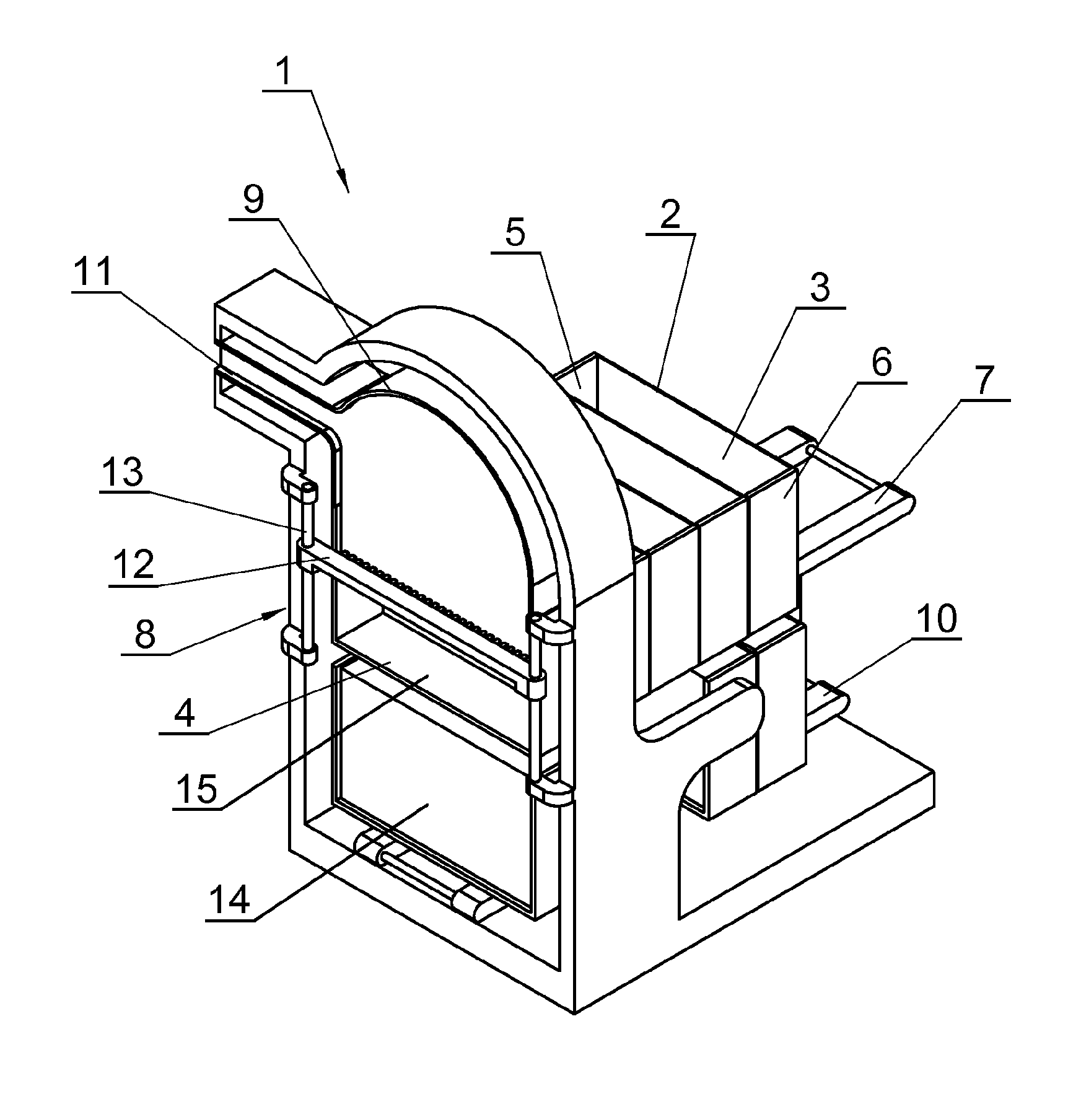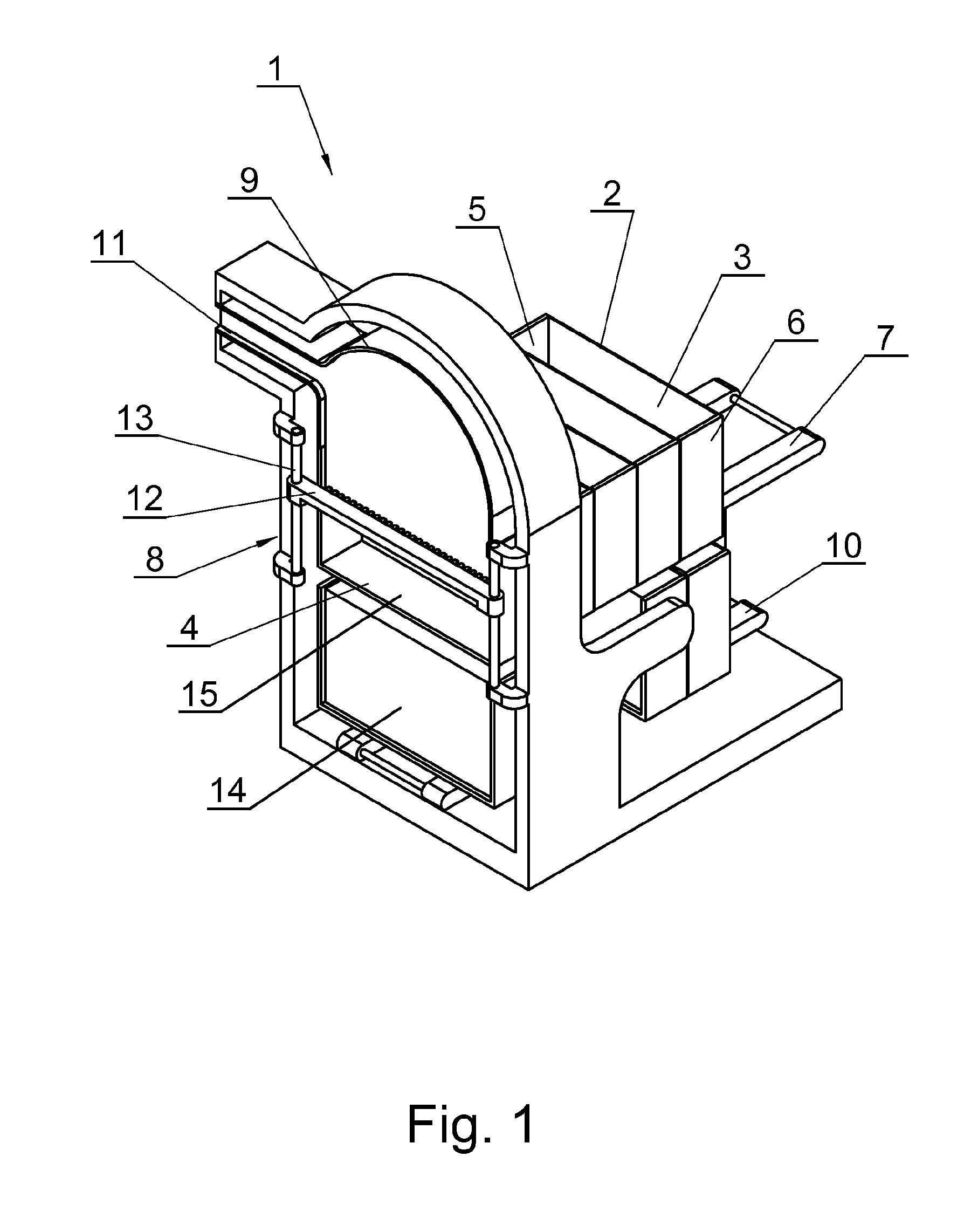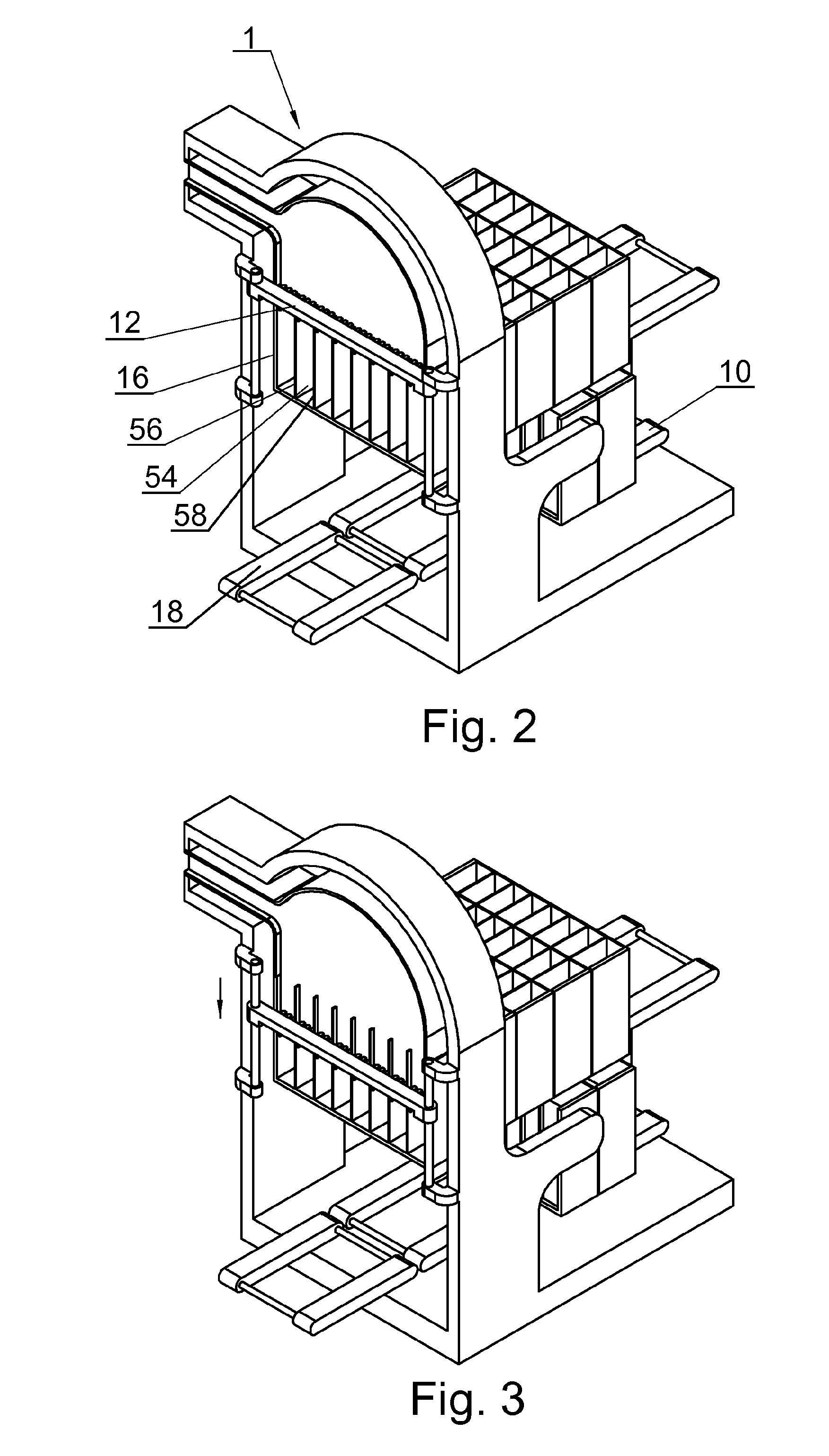Apparatus for filling a cavity, filling station and method of filling a cavity
a technology for filling apparatuses and cavities, applied in the field of apparatus for filling cavities, filling stations and methods of filling cavities, can solve the problems of cigarette rods and filter rods being handled in enormous numbers, physical delicateness and fragile, etc., to simplify the mechanical construction of the filling station, reduce the number of unwanted “voids, and reduce the need for space.
- Summary
- Abstract
- Description
- Claims
- Application Information
AI Technical Summary
Benefits of technology
Problems solved by technology
Method used
Image
Examples
Embodiment Construction
[0063]The filling station 1 in FIG. 1 exhibits an input zone in which empty trays 2 are presented for filling on the station. Each tray has a back wall 3 and parallel side walls 5 and 6 with a cavity in-between. Full trays are carried along on an input conveyor 7 to a filling region 8 of the filling station. The tray of FIG. 1 exhibits just a single cavity. Each tray has a base surface 4 that spans between the opposed side walls 5 and 6 of its single full width cavity. Empty trays are carried along on an input conveyor 7 to a filling region 8 of the filling station. A hopper 9 for rod-shaped articles such as cigarette rods or cigarette filter rods is fed from an input conveyor 11 and another input conveyor 7 brings empty trays to the filling station in which a filling device 12 is carried on vertical guides 13 so that it can perform an upstroke and a downstroke relative to the hopper 9. FIG. 1 shows a full tray 14 on the output conveyor 10, after having been lowered away from the fi...
PUM
| Property | Measurement | Unit |
|---|---|---|
| gravity | aaaaa | aaaaa |
| mass flow | aaaaa | aaaaa |
| speed | aaaaa | aaaaa |
Abstract
Description
Claims
Application Information
 Login to View More
Login to View More - R&D
- Intellectual Property
- Life Sciences
- Materials
- Tech Scout
- Unparalleled Data Quality
- Higher Quality Content
- 60% Fewer Hallucinations
Browse by: Latest US Patents, China's latest patents, Technical Efficacy Thesaurus, Application Domain, Technology Topic, Popular Technical Reports.
© 2025 PatSnap. All rights reserved.Legal|Privacy policy|Modern Slavery Act Transparency Statement|Sitemap|About US| Contact US: help@patsnap.com



